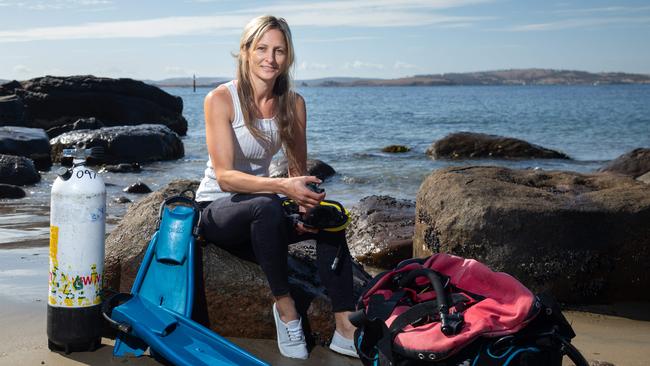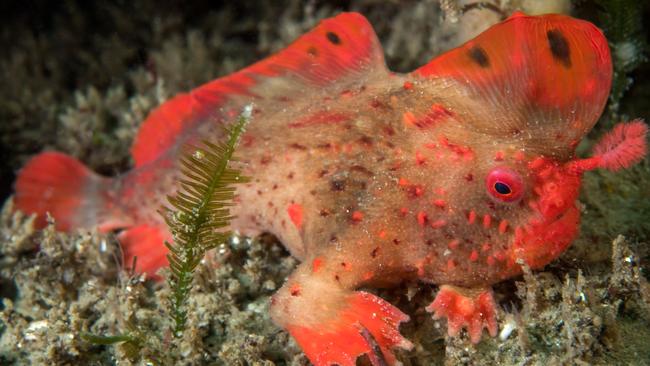Hatchlings give a helping hand to world’s rarest fish, the red handfish
It can’t swim and looks more alien than aquatic, but some are taking extraordinary steps to save the red handfish from oblivion.

It’s a fish that can’t swim and looks more alien than aquatic, but some dedicated souls are taking extraordinary steps to save the red handfish from oblivion.
The tiny, warty critter, which walks on modified pectoral fins on the sea floor, has the dubious honour of being the world’s rarest fish. Because of habitat loss linked to pollution, siltation and over-abundant sea urchins, it has been reduced to fewer than 100 individuals in two populations in one bay in southern Tasmania.
A group of researchers and supporters has not given up, however. They have successfully reared a brood in captivity and, after three months, 62 of 71 red handfish hatched from eggs taken from the wild have survived in laboratory tanks at Hobart’s Institute for Marine and Antarctic Studies.
Along with an initial group of 16 hatched earlier, some or all will be released into the wild in spring this year — the aim being to bolster populations in Frederick Henry Bay.
It is a significant development, given the precarious nature of the critically endangered species, which grows to about 6cm to 7cm.

“The next step really is extinction. They are on the brink, and that’s why we are doing this head-starting program,” said IMAS marine biologist Jemina Stuart-Smith. “Our options are sit back … and watch them become extinct, or try to do something to give them this chance.”
Baby red handfish are particularly vulnerable in the wild to predators or adverse events. By taking them into protective custody for their first months, the IMAS/CSIRO collaboration is hoping to prevent extinction.
“They are really quirky, charismatic little creatures,” Dr Stuart-Smith said. “There is so much we don’t know. We can’t even tell males and females apart
“The big picture is maintaining a healthy ecosystem. We also have a responsibility, given that it’s likely human impacts caused the decline.”
The project has received funding from government and private sources, but the public can get involved at handfish.org.au.
Donations of $1000 come with naming rights over a wild red handfish.





To join the conversation, please log in. Don't have an account? Register
Join the conversation, you are commenting as Logout